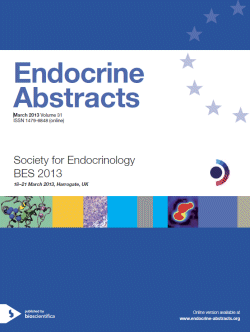Searchable abstracts of presentations at key conferences in endocrinology
Symposia
Nurture not nature: epigenetics and disease susceptibility
ea0031s3.1 | Nurture not nature: epigenetics and disease susceptibility | SFEBES2013
A mouse model of non-genetic inter-generational effects
Non-genetic inheritance allows the environmental history of an individual to influence the next generation. This form of inheritance is well documented in worms, fruit-flies and plants. Observational evidence in mammals suggests two forms of non-genetic transgenerational effects; developmental programming in response to early life exposures and germ-line transmission of an environmentally induced change i.e. epigenetic inheritance. However, at present t...
ea0031s3.2 | Nurture not nature: epigenetics and disease susceptibility | SFEBES2013
Nutritional programming of epigenetics in metabolic syndrome
There is clear evidence from epidemiological studies that adverse conditions during pregnancy can programme changes in offspring which lead to increased risk of developing type two diabetes and obesity, two diseases associated with metabolic syndrome. Whilst earlier investigations focused on undernutrition in relation to famine, it is also relevant in the developed world to consider how dieting may programme lasting changes in the offspring.In models of ...
ea0031s3.3 | Nurture not nature: epigenetics and disease susceptibility | SFEBES2013
Epigenetic changes associated with prenatal exposure to famine in humans
Epidemiologic studies suggest that adult disease risk may be associated with adverse environmental conditions early in development but the biological mechanisms behind these relations are unclear.Our group used the circumstances of the Dutch famine of 19441945 to evaluate epigenetic changes in men and women with prenatal famine exposure during the Second World War. Study subjects were followed from birth to age ∼58 years. To minimize potentia...




